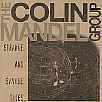In the previous two odd meter installments (Part 1, Part 2), we discussed quarter and eight note odd meter figures, and how to understand them. The possibilities of those types of odd meter figures are not very complex, and can be broken down using the groupings of two's and three's that we discussed, quite easily.
When the basic pulse is a sixteenth note (four notes, and possibly rests, per beat), it becomes much more complicated as the figures can be larger such as 17/16, leaving lots of ways to break the figure down. Although these type figures can be more complex than the other ones discussed, it still will boil down to groupings of two's and three's in the end. We will look at these types of 16th note figures and how to interpret them. Again, a sequencer to practice improvising chordal and melodic ideas is extremely important for these concepts. The ultimate goal is to feel these uncommon rhythms naturally.
I remember when I was young, which was the beginning of what would later be part of my style, naturally feeling these thing, but never even knowing that they were "odd", "polyrythmic" etc., until much later in life when I had to write out parts to what I was doing. Personally, now, when most music is comprised of quarter, eight, sixteenth, and triplet rhythms only, I can't help but wonder why the myriad of other time feels and rhythms are not used. Even most be-bop is made up of these rhythms. Other countries such as Greece do use odd meter, so I am referring to most Western popular music. I still never think about time signatures when writing, but first get used to them, and then that will probably happen.
Example 1. : As usual all odd meter can be broken up into groups of two's and three's.

Beats are: 2 + 3 + 2 + 3 + 2 + 2 + 3 = 17 16th notes

This can easily be counted as (these are 16ths remember), 12, 123/ 12/ 123 12/12/123. Or think of it as 5 + 5 + 7.
The nest example will have more of a sixteenth note feel, and is from "Virginia", from my latest release "Strange and Savage Tales". I hope you do check this record out (available at Guitar Nine), as all of these and many more concepts that are somewhat new are on this record, and are used very subtly, which should be the effect of using these type of rhythms.

Beats are 2 + 2 + 2 + 3 + 3 + 3

+ 3 + 3
This figure could be broken down in more than one way. It is not as clear cut s example one. See if you can find a way you might count this. All the sub divisions of 2's and 3's are laid out for you. There are a lot of possibilities for this figure.
Here is a method to help understand a rythym that you can not easily interpret with a 16th note pulse.

This is an easy 7/16 figure. However, if you are unfamiliar with this type of breakdown, you can double ll the time values on paper-such as this:

I think this is enough of a primer on odd meter. Much more can be written about the uses of them, but I think this will do.
In my following articles I will deal with other topics that I find rare, unusual, and use in my own music. The most important thing is to always have it be musical. Personally my own rule is, if it sounds complex, it probably is not such great concept. See you next time.
The late Colin Mandel was a guitarist out of Los Angeles and a graduate of the Berklee College Of Music.
During his career he had been featured as new talent in Guitar Player and Guitar World Magazines.
His instrumental CD is entitled "Strange and Savage Tales...".
